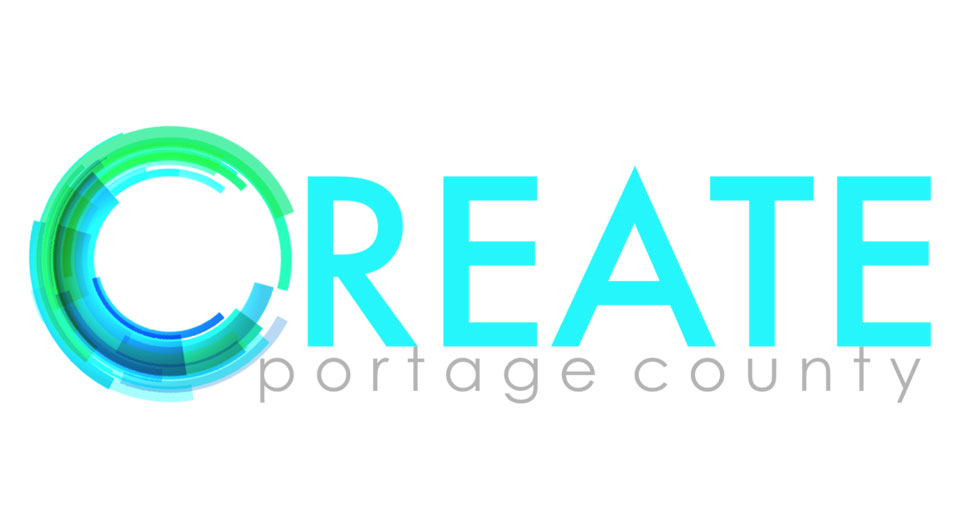
by Greg Wright, M.A., executive director at CREATE Portage County
and UWSP Professor of Economics Jason R. Davis, Ph.D.
This article was originally a part of the Center for Business and Economic Insight Spring 2021 Presentation.

Greg Wright 
Jason Davis
Regional economic development has traditionally focused on using tax incentives to attract businesses and create jobs while leveraging strong public schools and safe streets to attract workers. However, emerging models are shifting the focus of economic development away from this land-use model towards building a strong creative economy as the key to a vibrant community.
While there are varying definitions of the term creative economy, most focus on expanding cultural and artistic opportunities as well as supporting entrepreneurs and small businesses. The pandemic made much of this visible. It reminded us of how much we value concerts, festivals, theatrical performances and other creative events as we spent much of the past year sitting at home.
These assets do more than keep us entertained. They create a community with more innovation, a greater variety of local business, and cultural and artistic amenities that attract workers. Richard Florida has written extensively on this topic and has numerous articles showing that strong creative economies are tied to economic growth, innovation, and general satisfaction among residents. In his research, Florida defines the creative class “… to include people in science and engineering, architecture and design, education, arts, music and entertainment, whose economic function is to create new ideas, new technology and/or new creative content” (The Rise of the Creative Class, 2003).
While the pandemic devastated much of the traditional creative economy, shuttering restaurants and performance spaces alike, it also emphasized how essential creativity is to the health of thriving communities. Our ability to respond to the pandemic hinged on our capacity to find creative solutions. Teachers and students had to teach and learn virtually. Restaurants, grocers and retail stores expanded online ordering, delivery, and curbside take-out. Many businesses and workers shifted to working from home where possible, conducting meetings online with interrupting pets and children. We celebrated birthdays and other milestones virtually, with small outdoor gatherings, and with drive-by parties.
We saw this locally at businesses like The Main Grain Bakery, which shifted to online ordering and bakery packages to accommodate safe delivery options, or at Guu’s on Main with their Guu-zeebos, which offered winter-protected dining for safe small groups. The Stevens Point Alliance won recognition for Notes at Night and their work with the City to shift ordinances to support outdoor food and beverage sales.
We have all had to pivot in response to the pandemic, both in our work and personal lives. In many cases, we’ve had to make a series of pivots as we’ve searched for creative ways to achieve our goals even with pandemic constraints. The pandemic rewarded agility. We saw some businesses even exceed their projected revenues as they invested in strategies that increased their relevance because of the unusual conditions.
The value of agility—and the creativity inherent in it—is defining the digital economy in ‘normal’ times as well. Success relies on continuous improvement rather than becoming stagnant and stuck in our ways. For businesses to remain successful, they must be able to identify what’s not working and pivot to find new ways to create and distribute their product, or to adapt to new technologies and trends as they emerge. The infamous Blockbuster example shows how a failure to change can cause a business to feel almost instantly outdated when once successful businesses fall behind innovating competitors.
The pandemic also brought about an increase in new business start-ups. In the Wall Street Journal article, “Rising from the Pandemic’s Destruction: A Million New Businesses” (September 26, 2020), Gwynn Guilford and Charity Scott discuss the sharp increase in the number new businesses that started during the pandemic. In the article, they discuss new innovative businesses that were started by those who lost their jobs and were then motivated to open their own businesses. Some of these were businesses they had always dreamed of opening while others were based on finding new ways to deliver services given the limitations imposed by the pandemic.
We saw this entrepreneurial activity here as well with new start-ups from Caravan Wine Shop to DomainAlarm. CREATE’s new business accelerator Surge had 30 ideas in its initial round, and the Plover Shopko redevelopment is filling up with new and expanding local businesses. Whether suddenly unemployed because of the pandemic or making use of time freed up by vacated social calendars, many people used the pandemic to rethink their career plans, often enough launching their own projects and businesses. We are likely just at the beginning of this shift. As the economy reopens, we will understand fully what has changed and what new opportunities are emerging.
Creativity will be an important factor in sustaining growth as things start to return to normal. While many of the changes we’ve been forced to make were painful at first, we have found value in some of these changes. Many of us are eager to meet up with friends at restaurants, but expanded online ordering and delivery or curb-side pickup are really convenient when you’re busy. Many workers have found value in working from home. Schools will be able to serve students more comprehensively with both in-person and virtual options. Paperwork is processed much faster using electronic signatures rather than circulating physical paperwork.
The most successful businesses coming out of the pandemic will not be those that return to their old routines, but those that make use of what they learned under unusual circumstance to grow new products, services, or operations. We are certain to see start-ups and innovations that arise out of lessons learned during the pandemic as well, and these innovations will inform new technologies and practices that further shift the economy and our way of life. This is the new normal, a constant shift that responds and evolves and rethinks. The most vibrant economies will be in communities with the creative capacity to keep up.
